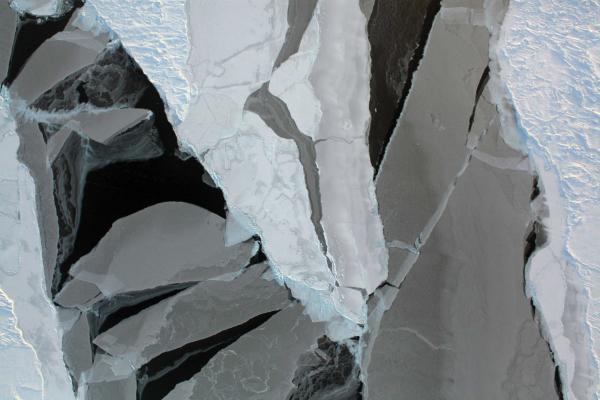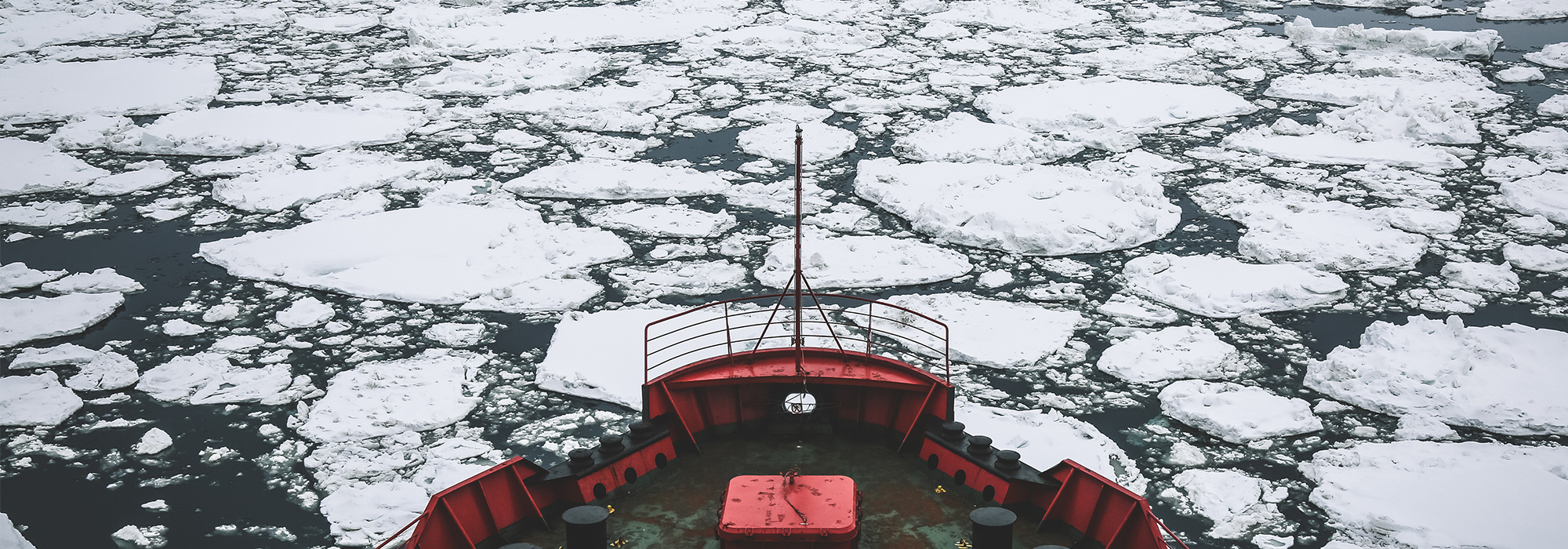
The view of earth from space can still tingle, its vulnerable beauty cast against the vast blackness beyond. But orbit also offers a more hard-headed perspective of home. Since the late 1970s, NASA satellites have been measuring the reach of Arctic ice, from the extent of its winter freeze into a contiguous mass, to the low point of its annual summer retreat when warmer air and water melt part of the cap. And this year, scientists said NASA’s data showed the smallest summer ice cover ever recorded by satellites.
Senior NASA scientist Joey Comiso was among the first observers to warn of an unusual shrinking of the summer ice cap. In an interview with Policy Options editor Bruce Wallace, Comiso describes how that process appears to be accelerating because less ice and blacker open seas result in less solar radiation being reflected back into space. He also warns that the Arctic ice cap’s role in everything from global sea currents to keeping greenhouse gases trapped in the permafrost holds implications for the planet beyond the polar region.
Policy Options: What is this data telling us?
Joey Comiso: It’s troubling. This year we have the lowest-ever perennial ice cover in the Arctic, the ice that survives the summer melt. It used to be in the order of 7 million square kilometres in the 1980s. Now it is way down, below 4 million square kilometres. In the last decade it has been dropping at a quite high rate. Some scientists had postulated that we would lose perennial ice by the end of this century, and actually it might be a lot earlier than that.
PO: Some scientists are now saying we could have ice-free summers in the Arctic within four years. Is that possible?
Comiso: I don’t think so. We still have some ice in the core that is very thick and this very thick ice will probably survive for some time. And there have been periods when the winter was relatively cold. This year we actually had quite a cold winter in the latter part, very close to that of the 1980s. What may have been different for 2012 is that there was a big storm in early August, centred in the Beaufort Sea. That separated quite a big chunk of ice — almost 400,000 square kilometres — from the core. The chunk was broken up and drifted to the south where the water is warmer and it became vulnerable to being melted completely.
PO: Does that suggest some of the record melt this year was caused by natural causes, rather than man-made causes?
Comiso: Yeah, it’s in part caused by the storm. But I don’t know that you would consider the storm to be completely natural causes. It was quite strong, and there are all these postulates about big storms being caused by warmer water. And water becomes warmer in the Arctic because of what we call conditioning.
We have had a large area of open water in the Arctic Basin in summer over the last few years. That large area of open water is basically black. Much of the solar radiation is absorbed by the ice-free ocean and therefore causes a warming of the upper part of the ocean. The storm might have been so strong because of this conditioning.
PO: Some people contend that we are looking at all this data in too short a time frame, that we’ve become accustomed in this century to an ice cap of a certain size but that it was small 1,000 years ago and it saw big declines even as recently as 1940. Does the historical record tell us anything different about changes to the ice cap?
Comiso: We didn’t have satellite data in 1940. But we have studies that show there was indeed a drop in the Arctic ice cover in 1940. During that summer, it went down to nearly 10 million square kilometres. At the time, the average size was something like 11 million, so there was drop of about a million square kilometres from the previous year. That decline is not what we are observing now. Now, we have a minimum of less than 4 million square kilometres. That’s a big change.

PO: You’ve described this reinforcing domino effect where less ice equals less reflectivity and therefore more solar absorption. How do we stop that momentum?
Comiso: What would be needed is some sustained cooling, especially in the winter, so the ice gets a chance to get thicker in the winter and is able to survive during the summer. Sustained cooling. But if you look at the trends, the Arctic warming is three times steeper than the rest of the globe.
PO: Are there policy steps we could take that would diminish the rate of decline, or halt it, that would not require getting a global agreement on reducing carbon emissions that is, in the short term, highly unlikely?
Comiso: Are you talking about human steps like geo-engineering? That’s very dangerous. You could try to inject a lot more aerosol into the atmosphere and that would have a cooling effect. But that would be very expensive and sustaining it would be quite expensive. And if all of a sudden we don’t have the money any more, we don’t know the consequences of stopping. The warming might bounce back in an even stronger manner. I would still favour the minimizing the emission of carbon dioxide and other greenhouse gases.
PO: Why does a smaller polar ice cap matter? From the perspective of developing new energy sources, this satellite imagery might convey an opportunity rather than a crisis.
Comiso: The impact could be bigger than what people realize. If you replace ice with open water, and as you get more and more absorption from the sun, that water is going to get warmer and warmer. A warmer ocean means warmer land around it, and the land around the Arctic Ocean is permafrost and glaciers. There are also signs that parts of Greenland will be unstable.
One of the concerns is a thawing of the permafrost. The permafrost is storing a very large fraction of methane and other greenhouse gases, and if you release whatever is stored in the permafrost, you would accelerate the warming in a way that we cannot project right now.
It also affects the circulation of the ocean. The ocean is not static. You have currents and there is a general pattern of circulation around the globe. If you change the coverage of ice in the Arctic we probably would alter that pattern. And if you change the circulation pattern of the ocean, which occupies 70 percent of the surface of the earth, you could change the climate. So that impact could reverberate around the world.
PO: You were one of the first scientists to draw attention to the shrinking Arctic ice cap. Did your projections ever anticipate that you’d be seeing imagery like you released this week?
Comiso: When we started looking at the Arctic ice back in the late 1970s, we saw a seasonal cover that melts to about 7 million square kilometres in the summer and expands to 16 million square kilometres in the winter, and we thought this would go on for a long, long time. We didn’t think the ice cover would retreat so much.
I published a paper in 2002 analyzing data from 2000 and recognized that the ice cover was declining. I was estimating a trend then for the ice minimum [shrinking] at a rate of nine percent a decade. I thought at the time that was relatively high. But now if you do a similar trend analysis you would be getting something like 17 percent per decade.
PO: Is this what the models projected?
Comiso: I’m not a modeller. I make predictions on the future of the Arctic ice based on statistics. But people have compared global models of sea ice with actual data and noted that even when this modelling incorporates the increase in greenhouse gases, the decline they [predict] is significantly less than what we observe from satellite data.
The reason may be that our existing models don’t incorporate all of what’s going on in the Arctic. Like the impact of this storm this year. They might have some dynamics there, but I don’t think the models incorporate the storm effect. [The storm] happened at the time when the ice was most vulnerable. If the models incorporate other phenomenon, like storms, then they might be able to reconstruct what we’re observing from satellites.
PO: The beauty of the satellite is that you get to believe your own eyes.
Comiso: Oh yeah. And the other thing is that our record is becoming longer and longer. When we had only ten years of data, we wouldn’t believe it was a trend at all. But now that we have 33, 34 years of data, it’s becoming more and more believable that something is happening.
Photo: Shutterstock by Katrin York







